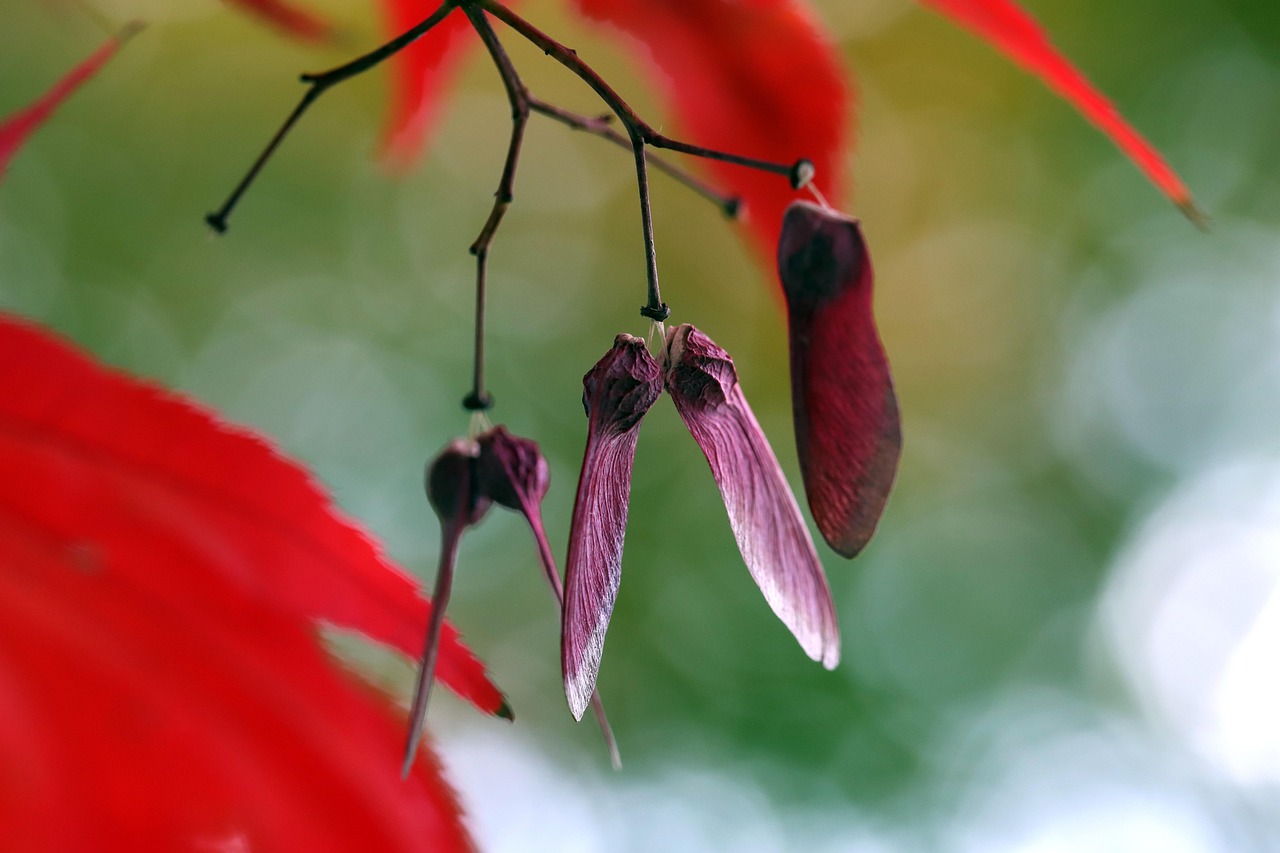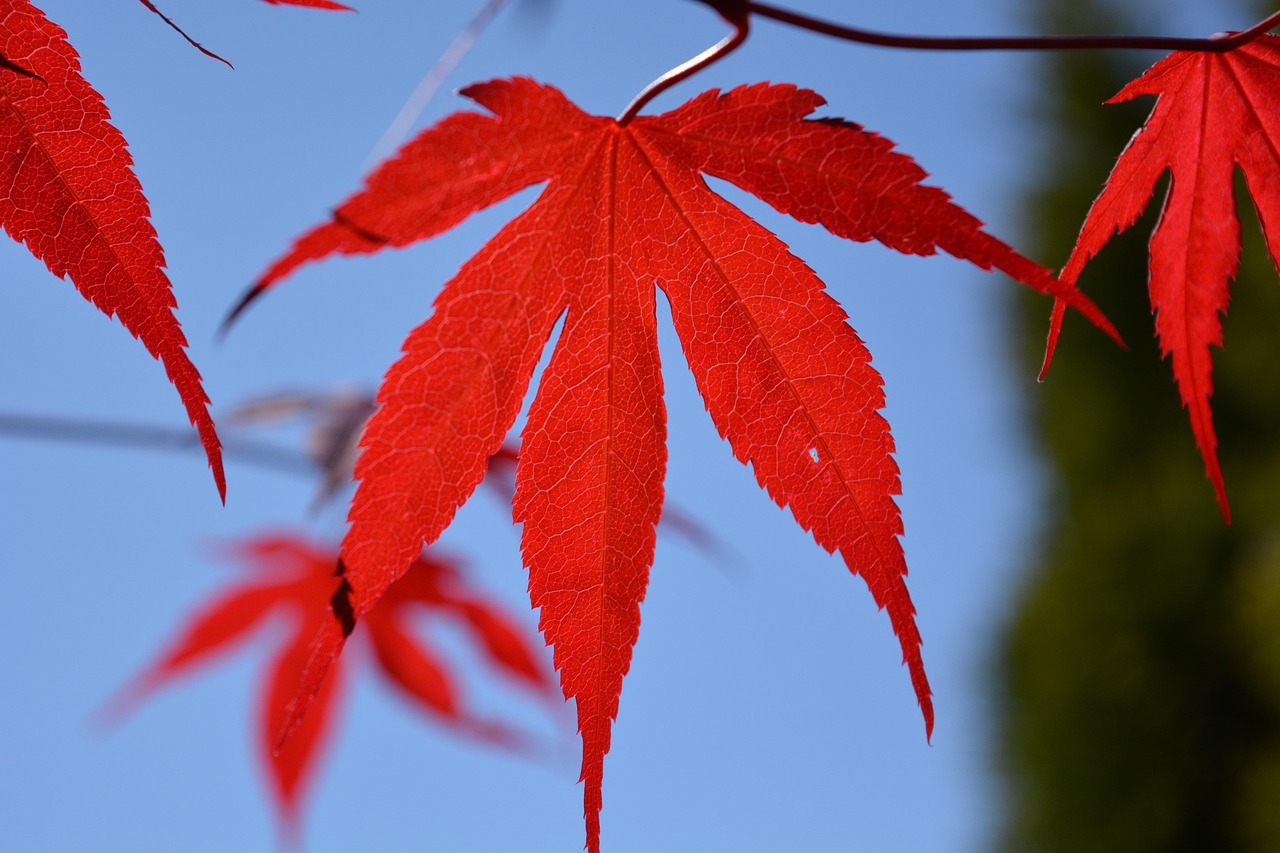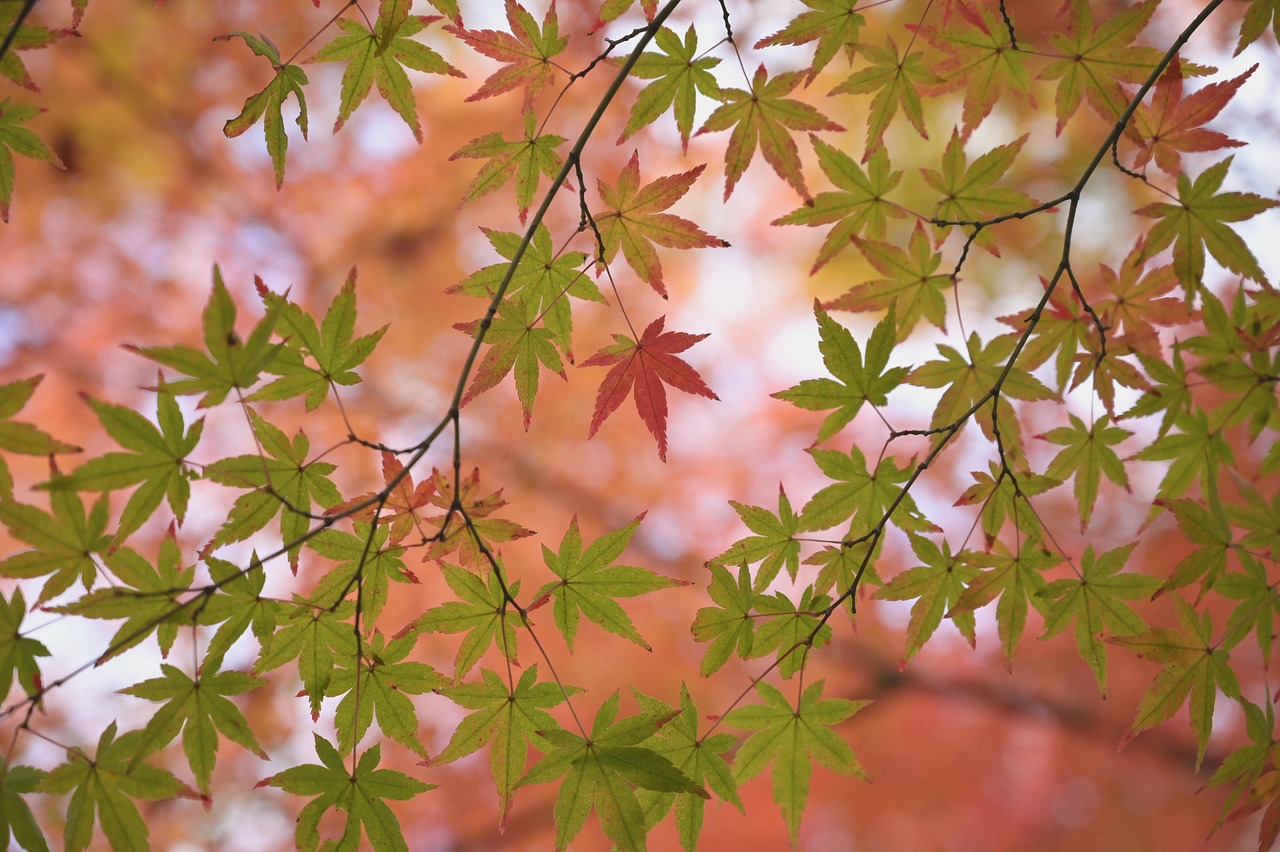A maple tree pruning diagram visually represents the best techniques for pruning maple trees. It highlights the correct cutting points, encourages healthy growth, and helps maintain the tree’s shape. Understanding these diagrams is essential for effective tree care.
Understanding Maple Tree Pruning
Pruning is an essential practice for maintaining the health and appearance of maple trees. Proper pruning encourages growth, removes dead or diseased branches, and shapes the tree. However, without a clear understanding of how to prune effectively, one might inadvertently harm the tree. That is where pruning diagrams come into play.

Maple trees are popular for their beautiful foliage and sturdy structure. They can grow quite large, which makes regular maintenance important. Pruning helps to manage the size of the tree, allowing for better sunlight exposure and air circulation among the branches. This practice also minimizes the risk of pests and diseases.
There are several types of maple trees, including the Sugar Maple, Red Maple, and Silver Maple. Each type may require slightly different pruning techniques based on their growth habits and characteristics. Understanding these differences is crucial for effective pruning.
Benefits of Pruning Maple Trees
Pruning offers numerous benefits that contribute to the overall health and aesthetic of a maple tree. Here are some key advantages:

- Improved Airflow: Pruning opens up the canopy, enhancing airflow which helps decrease the risk of fungal diseases.
- Promotes Growth: By removing dead or overcrowded branches, new growth can flourish more effectively.
- Enhanced Structure: Regular pruning helps maintain a strong framework, reducing the likelihood of branch breakage.
- Aesthetic Appeal: Shaping a tree through pruning enhances its overall appearance in your landscape.
Key Pruning Techniques
The process of pruning involves specific techniques that ensure healthy cuts and promote regrowth. Here are some essential techniques to consider:
- Thinning: This method involves selectively removing branches to allow more light into the center of the tree.
- Heading: Cutting back a branch to a bud or lateral branch encourages new growth in a specific direction.
- Reduction: This technique reduces the size of a tree by cutting back larger branches to smaller ones without compromising the tree’s structure.
- Cleaning: Removing dead or damaged wood helps prevent disease spread and maintains a healthy tree.
Common Mistakes in Pruning
While pruning is beneficial, mistakes can lead to serious harm to your maple tree. Here are some common pitfalls:
- Over-pruning: Removing too many branches can stress the tree and hinder its growth.
- Poor Timing: Pruning at the wrong time of year can expose the tree to damage from cold weather or pests.
- Incorrect Cuts: Making improper cuts can lead to injury or disease in the tree.
- Ignoring Tree Health: Failing to assess the health of a tree before pruning may lead to further issues.
Maple Tree Pruning Diagram Overview
A maple tree pruning diagram provides visual guidance on where and how to prune effectively. Such diagrams typically include labeled sections that indicate:

- The areas designated for thinning
- The branches that should be removed entirely
- The points for making cuts to promote healthy regrowth
When using a diagram for pruning, it is essential to follow the indicated paths carefully. This ensures that cuts are made at the right angles and locations, promoting healing and preventing damage. Observing these diagrams can significantly enhance your pruning skills and improve the health of your maple trees.
Tools Needed for Pruning
To prune maple trees effectively, having the right tools is crucial. Here are some essential tools you should consider:
- Hand Pruners: Ideal for small branches and precision cuts.
- Loppers: Useful for cutting thicker branches that hand pruners cannot handle.
- Saws: For larger branches, a pruning saw or chainsaw may be necessary.
- Safety Gear: Always wear gloves and goggles to protect yourself while pruning.
Understanding how to use these tools correctly will ensure efficient pruning and minimize the risk of injury or damage to your trees. Be sure to keep your tools sharp and clean for optimal performance.

The combination of a good diagram, suitable tools, and proper techniques will enable you to prune your maple trees successfully. With practice, you will gain confidence in your ability to maintain these beautiful trees effectively.
Best Practices for Pruning Maple Trees
To achieve the best results when pruning maple trees, following specific best practices is essential. These practices ensure the health of the tree while promoting desired growth patterns. Understanding when and how to prune will lead to a thriving maple tree.
Timing Your Pruning
The timing of pruning is crucial for the health and growth of maple trees. Pruning at the right time can significantly influence the tree’s recovery and vitality. Here are some key considerations:
- Late Winter to Early Spring: The best time to prune most maple trees is during late winter or early spring before new growth begins. This timing allows you to see the tree’s structure clearly without leaves obstructing your view.
- Avoid Late Summer: Pruning in late summer can lead to stress and encourage new growth that may not harden off before winter.
- Monitor Sap Flow: Maples may bleed sap if pruned in early spring as they come out of dormancy. While this is generally not harmful, it is good to be aware of.
Understanding Tree Structure
Before pruning, it is vital to understand the basic structure of a maple tree. Each tree has a central leader, lateral branches, and a canopy. Recognizing these elements can help you make informed decisions about where to cut:
- Central Leader: This is the main trunk of the tree. It should remain dominant, and any competing branches should be removed.
- Lateral Branches: These are branches extending from the central leader. They should be spaced evenly around the trunk to allow light penetration.
- Canopy: The upper layer of leaves and branches. Proper pruning here ensures good air circulation and sunlight exposure.
Making the Right Cuts
The type of cut you make during pruning can greatly affect how well the tree heals. Here are some techniques to keep in mind:
- Angle Cuts: When making cuts, use a 45-degree angle to promote water runoff and reduce the risk of decay.
- Leave a Branch Collar: When cutting a branch, avoid cutting too close to the trunk. Leave a small branch collar to aid in healing.
- Cut Above Buds: When heading back branches, always cut just above a bud to encourage new growth in that direction.
Pruning Young vs. Mature Maple Trees
The approach to pruning may vary significantly between young and mature maple trees. Understanding these differences can lead to better outcomes:
Young Maple Trees
Pruning young maple trees focuses on establishing a strong structure. Here are some tips:
- Encourage Central Leader: Select one central leader and remove competing shoots to promote vertical growth.
- Light Pruning: Conduct light pruning to shape the tree without removing excessive foliage.
- Remove Weak Growth: Eliminate any weak or crossing branches to encourage strong growth patterns.
Mature Maple Trees
Mature maple trees need different care compared to younger ones. Consider these practices:
- Focus on Health: Prioritize removing dead or diseased wood over shaping the tree.
- Avoid Heavy Pruning: Limit aggressive cuts that could stress the tree. Focus on thinning rather than reducing size.
- Periodic Maintenance: Regularly assess and maintain the tree’s health through light pruning each year.
The Role of Pruning Diagrams in Practice
Utilizing pruning diagrams can enhance your understanding and execution of proper techniques. Diagrams serve as visual aids that illustrate various aspects of pruning:
- Identification of Branch Types: Diagrams help identify which branches should be pruned based on their size and position.
- Clear Cutting Points: They indicate precise cutting points for optimal healing and growth.
- Visual Representation of Tree Shape: Diagrams provide an overview of desired shapes, helping maintain symmetry in mature trees.
Learning from Experienced Arborists
Engaging with knowledgeable arborists can offer invaluable insights into effective pruning techniques. Here are some ways to learn from experts:
- Workshops and Classes: Attend local workshops or classes focused on tree care and pruning techniques.
- Consultation Services: Hire an arborist for a consultation or on-site assessment of your trees.
- Online Resources: Explore reputable online sources that provide guidelines and tutorials on maple tree pruning.
The combination of best practices, understanding tree structure, and utilizing diagrams will empower you to prune your maple trees effectively. By following these guidelines, you can foster healthy growth and maintain the beauty of your landscape for years to come.
Common Diseases and Pests Affecting Maple Trees
Maple trees, while robust, are susceptible to various diseases and pests that can affect their health and growth. Understanding these threats is essential for effective pruning and maintenance. Identifying problems early allows for timely intervention, which can save the tree from severe damage.
Common Diseases
Several diseases can impact maple trees, leading to decline or death if not managed properly. Here are some of the most common diseases:
- Verticillium Wilt: This fungal disease affects the tree’s vascular system, causing wilting and yellowing of leaves. It often results in branch dieback.
- Leaf Spot: Various fungi and bacteria can cause leaf spots, leading to premature leaf drop. This condition can weaken the tree over time.
- Anthracnose: This disease causes dark spots on leaves and can lead to defoliation. It thrives in cool, wet conditions.
- Root Rot: Caused by overwatering or poor drainage, root rot can severely affect the tree’s health and stability.
Signs of Disease
Detecting signs of disease early can help mitigate harm to your maple tree. Look for the following symptoms:
- Discolored Leaves: Yellowing, browning, or spotting on leaves may indicate a problem.
- Wilting or Dropping Leaves: If leaves are wilting or falling prematurely, it could be a sign of stress or disease.
- Cankers: These sunken lesions on branches or trunks often signal serious infections.
- Dieback: Dead branches, especially in the upper canopy, can indicate vascular issues or disease.
Pests That Target Maple Trees
In addition to diseases, certain pests can pose significant threats to maple trees. Here are a few common pests to watch out for:
- Aphids: These small insects suck sap from leaves and can cause curling and yellowing. They also produce honeydew, which attracts other pests.
- Maple Borers: The larvae of these beetles bore into the trunk and branches, weakening the tree structure over time.
- Spider Mites: Often found on the undersides of leaves, they cause stippling and leaf drop. They thrive in hot, dry conditions.
- Scale Insects: These pests attach themselves to branches and leaves, sucking sap and potentially leading to decline.
Managing Diseases and Pests
Effective management of diseases and pests involves several strategies that can help keep your maple trees healthy. Here are some recommended practices:
- Regular Inspection: Frequently check your trees for signs of disease or pest infestation. Early detection is key to effective management.
- Proper Pruning: Remove any diseased or infested branches promptly to prevent the spread of problems.
- Improved Air Circulation: Ensure adequate spacing between trees and prune to improve airflow within the canopy, helping to reduce humidity that encourages disease.
- Pesticides and Fungicides: If necessary, consult with a professional about appropriate chemical treatments to control pests and diseases.
The Importance of Soil Health
The health of the soil surrounding your maple trees plays a crucial role in their overall vitality. Healthy soil supports robust root systems, enabling trees to absorb water and nutrients efficiently. Here are key factors to consider regarding soil health:
Nutrient Management
Nutrient-rich soil promotes healthy growth in maple trees. Regular soil testing can help you understand nutrient levels and deficiencies. Here’s what you should focus on:
- Nitrogen: Essential for leaf growth, nitrogen is vital for lush foliage. If soil tests show low nitrogen levels, consider applying organic fertilizers.
- Phosphorus: Important for root development and flowering, phosphorus should be adequately available in the soil.
- Potassium: This nutrient aids overall plant health and resistance to stress. Ensure adequate potassium levels for strong trees.
Soil Structure
The physical structure of soil affects water retention and root development. Here are some aspects to consider:
- Aeration: Ensure good aeration in the soil to promote healthy root growth. Compacted soil can hinder root expansion.
- Drainage: Proper drainage prevents waterlogging, which can lead to root rot and other problems.
- Add Organic Matter: Incorporate compost or well-rotted manure into the soil to improve its structure and nutrient content.
Water Management
Water plays a critical role in soil health and tree growth. Here are some guidelines for effective water management:
- Irrigation Needs: Monitor rainfall and supplement with irrigation during dry spells, especially for young trees.
- Avoid Overwatering: Too much water can suffocate roots and promote disease; ensure proper drainage in the landscape.
- Mulching: Apply mulch around the base of the tree to retain moisture, suppress weeds, and regulate soil temperature.
Caring for your maple trees involves a comprehensive approach that includes understanding diseases and pests, maintaining soil health, and following proper pruning techniques. By addressing each aspect diligently, you can ensure vibrant growth and longevity for your beloved maples.
Additional Considerations for Maple Tree Care
While pruning, pest management, and soil health are vital aspects of caring for maple trees, several other considerations can enhance their growth and vitality. Understanding the broader context of tree care can lead to more effective maintenance practices.
Seasonal Care Practices
Each season presents unique challenges and opportunities for maple tree care. Here are some seasonal practices to consider:
- Spring: This is the ideal time for pruning and applying fertilizers. Observe for any signs of pests or diseases as new growth appears.
- Summer: Monitor watering needs during hot months. Consider mulching to retain moisture and suppress weeds.
- Fall: Rake fallen leaves to prevent diseases. It is also a good time to assess the tree’s structure and make notes for the next pruning season.
- Winter: Assess any damage from snow or ice. Protect young trees from harsh winter conditions with wraps or mulch.
Environmental Factors
The environment plays a significant role in the health of maple trees. Understanding these factors can help you provide better care:
- Sunlight: Maple trees thrive in full sun to partial shade. Ensure they receive adequate sunlight, especially if planted in a crowded landscape.
- Soil Type: Maples prefer well-drained, loamy soil. Conduct soil tests regularly to ensure optimal conditions.
- Climate: Be aware of your local climate. Certain varieties of maple are better suited to specific climates, affecting their growth patterns.
Choosing the Right Maple Variety
Selecting the right variety of maple tree can make a difference in your landscape. Here are some popular types and their characteristics:
| Maple Variety | Characteristics | Best Uses |
|---|---|---|
| Sugar Maple | Known for its vibrant fall color and sweet sap | Shade tree and syrup production |
| Red Maple | Fast-growing with brilliant red foliage | Landscape enhancement and naturalizing |
| Silver Maple | Fast-growing with a broad canopy; tolerates wet soil | Shade and street trees |
| Acer japonicum (Japanese Maple) | Small, ornamental; unique leaf shapes and colors | Garden focal points and bonsai |
Final Thoughts
Caring for maple trees involves a multifaceted approach that includes proper pruning techniques, pest and disease management, soil health maintenance, and seasonal care practices. By understanding the unique needs of each tree and adapting your care strategies accordingly, you can foster robust and beautiful maples in your landscape.
The use of pruning diagrams can significantly enhance your understanding of effective techniques. These diagrams serve as valuable references that provide guidance on proper cuts, encouraging healthy growth patterns and maintaining the tree’s aesthetic appeal.
Moreover, engaging with local arborists, participating in workshops, and utilizing online resources can deepen your knowledge and skills in tree care. Such proactive steps ensure that you not only maintain the health of your maple trees but also contribute positively to the environment.
In summary, the journey of nurturing maple trees is rewarding. By implementing the strategies discussed in this article, you will cultivate thriving trees that enhance your landscape’s beauty for many years to come. Regular observation, timely interventions, and an eagerness to learn will empower you as a caretaker of these magnificent trees.
